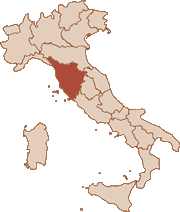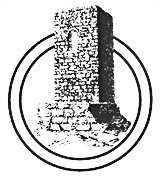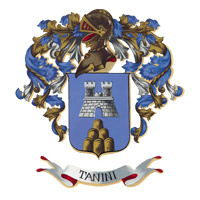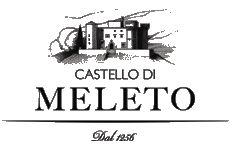 Tuscany
Tuscany, a famous Italian wine region with an area of 22 993 square kilometres. The region is situated in central west area of Italy. The landform is dominated by hills (66,5%), mountains (25,1%) and plains (8,4%). Vineyards alternating olive groves spread on the mild hills.
This beauty of landscape is emphasized by the cypress trees growing along the narrow paths traversing the hills. Tuscany’s mild climate and soil condition have been always favourable for vineyards. The vine was widely spread in Tuscany before the arrival of the Etruscans in the VII century B.C. Throughout the next centuries wine cultivation was continued and wine was exported to the Mediterranean countries. The Middle-Ages was blooming period for Tuscan wines due to commitment of noble families, the names of which today appear on the labels of the finest wines: Ricasoli, Frescobaldi, Antinori. In the course of time writings evolved and emerged many writing records that described the great wines from the region – those from Montepulciano, those made from the Trebbiano, Malvasia, Aleatico grapes and, of course, those made from the most important among them – the Sangiovese grape. Famous Chianti wine, noble Brunello di Montalcino wine and Vino Nobile di Montepulciano are made exactly from the Sangiovese grape.
The above mentioned are the clones of the same grape variety, which is also known by another names, this is why Chianti is made from the Sangiovese grape, Brunello di Montalcino from the Sangiovese Grosso, and Vino Nobile di Montepulciano from the Prugnolo Gentile. The Great Duke of Tuscany – Cosimo III De Medici made a notice that delimited the areas, restrictions, rules concerning the production of Chianti wine. The Chianti area included Pomino, Carmignano and Valdarno Sopra what was the beginning of DOC regulation de facto.
Hence, the Sangiovese dominates in Tusany. Leggend has it that its name means the blood of Jove
and traces back to the times of the Etruscans. This delicate and mildly fruity grape has become famous worldwide due to Chianti wine. The classic Chianti production zone is called Chianti Classico and covers the area of the communes of Gaiole in Chianti, Castellina in Chianti and Grave in Chianti. Tuscany’s other great wines are Brunello di Montalcino and Vino Nobile di Montepulciano. These are longterm ageing wines and only when ageing few years can represent the best of wine - color, aromas and structure. Obviously, Vernaccia di San Gimignano and Vin Santo are also worth a mention, the first is made form the Vernaccia grape and the second is a naturally sweet wine made from the grapes of Malvasia Bianca and Trebbiano Toscano. Today Tuscany is internationally famous. A lot of tourists visit the region all year round. However, Tuscany’s most indigenous Sangiovese is known as in purezza – without blends of other grapes, despite the fact that its recipe allows to blend with Merlot and Cabernet.









 Tuscany, a famous Italian wine region with an area of 22 993 square kilometres. The region is situated in central west area of Italy. The landform is dominated by hills (66,5%), mountains (25,1%) and plains (8,4%). Vineyards alternating olive groves spread on the mild hills.
Tuscany, a famous Italian wine region with an area of 22 993 square kilometres. The region is situated in central west area of Italy. The landform is dominated by hills (66,5%), mountains (25,1%) and plains (8,4%). Vineyards alternating olive groves spread on the mild hills.

























